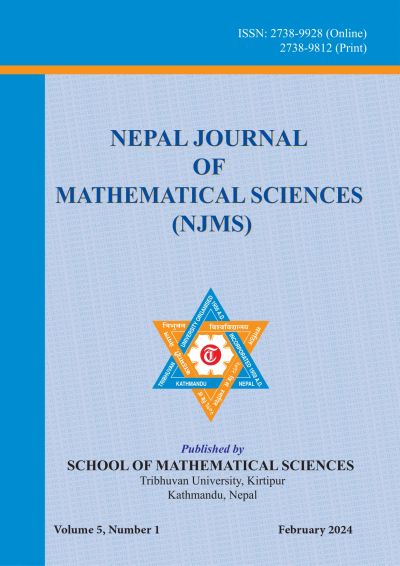Mathematical Approach for Estimating the Effective Reproductive Number for COVID-19 in Nepal with Data-Driven SIR Model
DOI:
https://doi.org/10.3126/njmathsci.v5i1.76447Keywords:
COVID-19, transmission dynamics, effective reproduction number, RNN-LSTMAbstract
The Effective Reproduction Number (Rt) is a critical parameter for understanding infectious disease dynamics and informing public health interventions. This study introduces a methodological framework for estimating Rt to analyze COVID-19 transmission dynamics in Nepal. The observational approach uses the data of the COVID-19 in Nepal within a Susceptible-Infected-Removed (SIR) model, excluding vital dynamics. The time-dependent transmission and recovery rates are calculated using the data in the model equations, and then these parameters, along with epidemic data, are fed into an Long Short Term Memory (LSTM) neural network, which learns temporal patterns from the data to improve prediction accuracy. The LSTM predicted parameters are applied into the formula to estimate Rt derived by the Next Generation Matrix method. The estimated values of Rt are validated against empirically observed data. Model performance is assessed using multiple metrics including mean absolute error (MAE), mean square error (MSE), root mean square error (RMSE) and coefficient of determination (r2) to quantify the accuracy of predictions. This methodology enables quantitative assessment of epidemic trajectories and control measures, contributing to our understanding of COVID-19 dynamics in Nepal.
Downloads
Downloads
Published
How to Cite
Issue
Section
License
© School of Mathematical Sciences, Tribhuvan University

